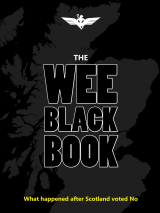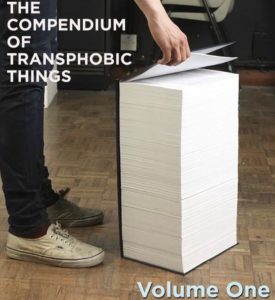Honestly, folks, I don’t even want to do this because almost nothing is more tedious for anyone else to read than two people having an internet beef – a lesson that I learned, ironically, from reading the site this post concerns, which does little else – but as well as reacting on a basic human level to someone being THIS deranged by hatred of you, it’s worth marvelling, like an elegant Victorian gentleman or lady taking a guided tour of an asylum, at how much insanity they can squeeze into a small space as a result.

And to detail the madness we have to start with that headline.
Read the rest of this entry →
Tags: and finally
Category
analysis, idiots, scottish politics, wtf
Tommy Sheppard knows a John Swinney you don’t know.


And who, conveniently, you’re not allowed to see.
Read the rest of this entry →
Category
analysis, scottish politics, surrender
Lacking anything better to do on a grey and cloudy day in Bath, we thought it might be a lark to go through every Holyrood constituency in Scotland and contemplate where it might go in next year’s election, based on the current state of polling.

And just to make things interesting, compared to our last assessment we’re going to give opposition parties the (often considerable) benefit of the doubt in a few seats for the sheer heck of it, and see if there’s any even slightly plausible outcome that means the SNP might win some list seats if all their voters vote for them on both ballots, or if they’ll waste a million votes for nothing and get dozens of Unionists elected like they did in 2021. [SPOILER: don’t prepare yourself for a surprise.]
Read the rest of this entry →
Category
analysis, idiots, scottish politics, stats
Humza Yousaf, March 2024:

Actual result: Labour 37, SNP 9, Lib Dems 6, Tories 5. The two horses in the two-horse race finished second and fourth, and won just 19% of seats between them.
And here’s John Swinney a week and a half ago:

The two horses finished second and third.
The matter of whether Yousaf and Swinney are a pair of massive liars, or are simply hopelessly out of touch with political reality, is one we’ll leave to your own judgement.
Category
analysis, history, scottish politics
One of the very few phrases universally recognised in Scotland but which will draw blank looks anywhere else in the UK is the dry, dark “Well, ye ken noo”. Until recently it had no equivalent that we can bring to mind in the rest of the English-speaking world, although arguably that gap has now been at least partly filled by the acronym “FAFO”.
(We try not to swear on the site, so let’s say it stands for “Fool Around, Find Out”.)
So now the smoke has cleared, the troops have departed the battlefield and the winner is enjoying the spoils, what did we find out on Thursday night, and what didn’t we?

Let’s assess the scene.
Read the rest of this entry →
Category
analysis, scottish politics, stupidity, surrender
In the end, the people of Hamilton, Larkhall and Stonehouse made fools of us all.

Because nobody, but nobody, saw that result coming.
Read the rest of this entry →
Category
analysis, scottish politics, wtf
We must admit, we don’t quite get what the Daily Record is trying to achieve.

Having already told its dwindling band of readers that voting for both the SNP and Labour is the only way to stop Reform in today’s Hamilton by-election, for the last two days it’s deployed some random loony in a hard hat and the vegan former Rangers captain Graeme Souness to the same ostensible end.
Souness, famously a supporter of Margaret Thatcher and the Conservatives, tells Record readers today that they must vote Labour in order to prevent Thatcher’s right-wing heirs from winning the seat – even though Labour are dead, plucked, stuffed and cooked geese in the eyes of the bookmakers and voting for them only increases the chances of both Reform AND the SNP.
Read the rest of this entry →
Category
analysis, idiots, media, scottish politics
A few weeks ago we had a thought. And it seemed quite an interesting thought, so we decided to commission a poll on it from our old pals at Norstat.

63-37? Well, there’s your clear and overwhelming support.
Read the rest of this entry →
Category
analysis, scottish politics, surrender
If you’ve been reading Scottish social media or the Scottish press for the last year and a half or so, the following graph is going to come as a bit of a shock to you.

But there it is all the same.
Read the rest of this entry →
Tags: poll
Category
analysis, scottish politics, world
We’ve just taken delivery of some REALLY interesting polling results, readers, but it’s going to take a while to fully analyse and write them up, so in the meantime let’s look at some slightly less interesting ones which came from the same poll – the Norstat one commissioned by the Sunday Times and published today, which we hitched a lift on.

The headline figures show an eight-point Yes lead, which is nice, although it’s also entirely abstract since the SNP has no current policy for translating independence support into actual independence (or even another referendum about it).
All the same, it seemed a good time to assess the wider picture.
Read the rest of this entry →
Category
analysis, psephology, scottish politics
If you’re a fan of lazy, superficial political analysis from the mentally unwell, you might have read this week about John Swinney’s great strategic triumph of having “coaxed” an “endorsement” out of the Daily Record for Thursday’s by-election in Hamilton.
And if so, you might be forgiven for thinking that that analysis looks pretty stupid now.

(Holiday Boy is still jetting his way around the globe, and indeed will be for the next few weeks, so in the absence of cartoons what else can we do but look at comics?)
But what, if anything, do those front pages tell us?
Read the rest of this entry →
Tags: no cartoons
Category
analysis, scottish politics
Alert readers will be familiar with this site’s ongoing quest for an explanation as to why controversy-plagued charity LGBT Youth Scotland continues to operate in dozens of Scottish primary and even nursery schools, pushing gender ideology onto children as young as four despite only having a remit to support 13-25-year-olds.

Last month we were, to coin a phrase, stonewalled by Scotland’s charity regulator, the OSCR, but we filed a review request and today we received – a couple of weeks past the deadline – a response.
Below is a quick video of it.
Read the rest of this entry →
Category
analysis, corruption, disturbing, grooming, investigation, scottish politics, transcult
































